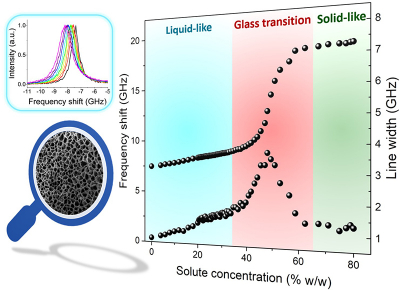
A study derived by an international collaboration between the University of Exeter, Gloucestershire Hospitals NHS Foundation Trust, the University of Perugia (Italy) and the Institute of Materials of the National Research Council of Italy (IOM-CNR) applied an innovative biophotonic approach to highlight how the microscopic processes drive mechanical modification in biological tissues. The team, coordinated by Dr Francesca Palombo from the University of Exeter and Prof. Daniele Fioretto from the University of Perugia, Italy, analysed the potential of the technique in the investigation of tissue on the microscale.
While the mechanical properties of both cells and tissues play a fundamental role in the function of cells and how disease develops, the traditional methods to study these properties can be limited and invasive. Scientists have recently utilised Brillouin microscopy as a way of carrying out non-invasive studies of these biomechanical properties. However, a complicating factor in these measurements is the contribution of water both to tissue and cell biomechanics, as well as the Brillouin spectrum itself.
Now, for the new study, the team utilised natural biopolymer hydrogels to mimic human tissue and to compare results against measurements taken in human tissue samples. They found that this new technique allows investigations of tissue functional properties (and alterations) to a subcellular scale. The results of this study demonstrate that, whilst water plays a major role in determining mechanical properties, the effect of the solute including proteins, lipids and other components is apparent especially on viscosity, which is relevant for the transport of metabolites and active molecules.
The research was published in Science Advances.
Dr Palombo, an Associate Professor in Biomedical Spectroscopy at the University of Exeter, said: “We set out to understand the bases of Brillouin signals in biomedical samples. While taking a step back to analyse the fundamentals of this light scattering process, we made a substantial advancement in that we now understand the distinctive contribution of interfacial dynamics, beyond bulk water, to the viscoelastic response of biological tissues. This has wide-ranging implications in that phase changes, as well as acoustic anisotropy, are ideal scenarios where Brillouin imaging provide unique information. We are still working on establishing the relevance of this technique in medical sciences, however, it is undisputable that it offers an invaluable contrast mechanism to detect physiological and disease states.”

